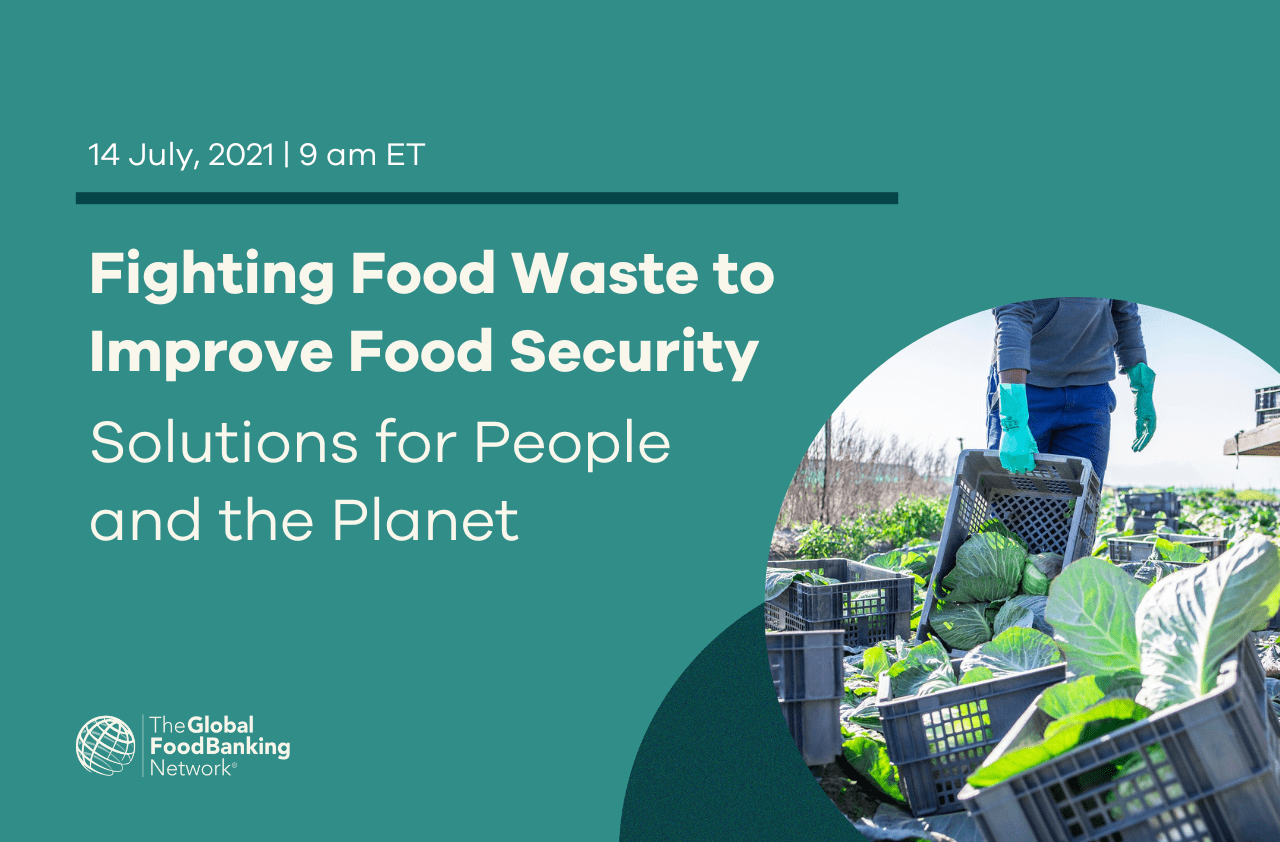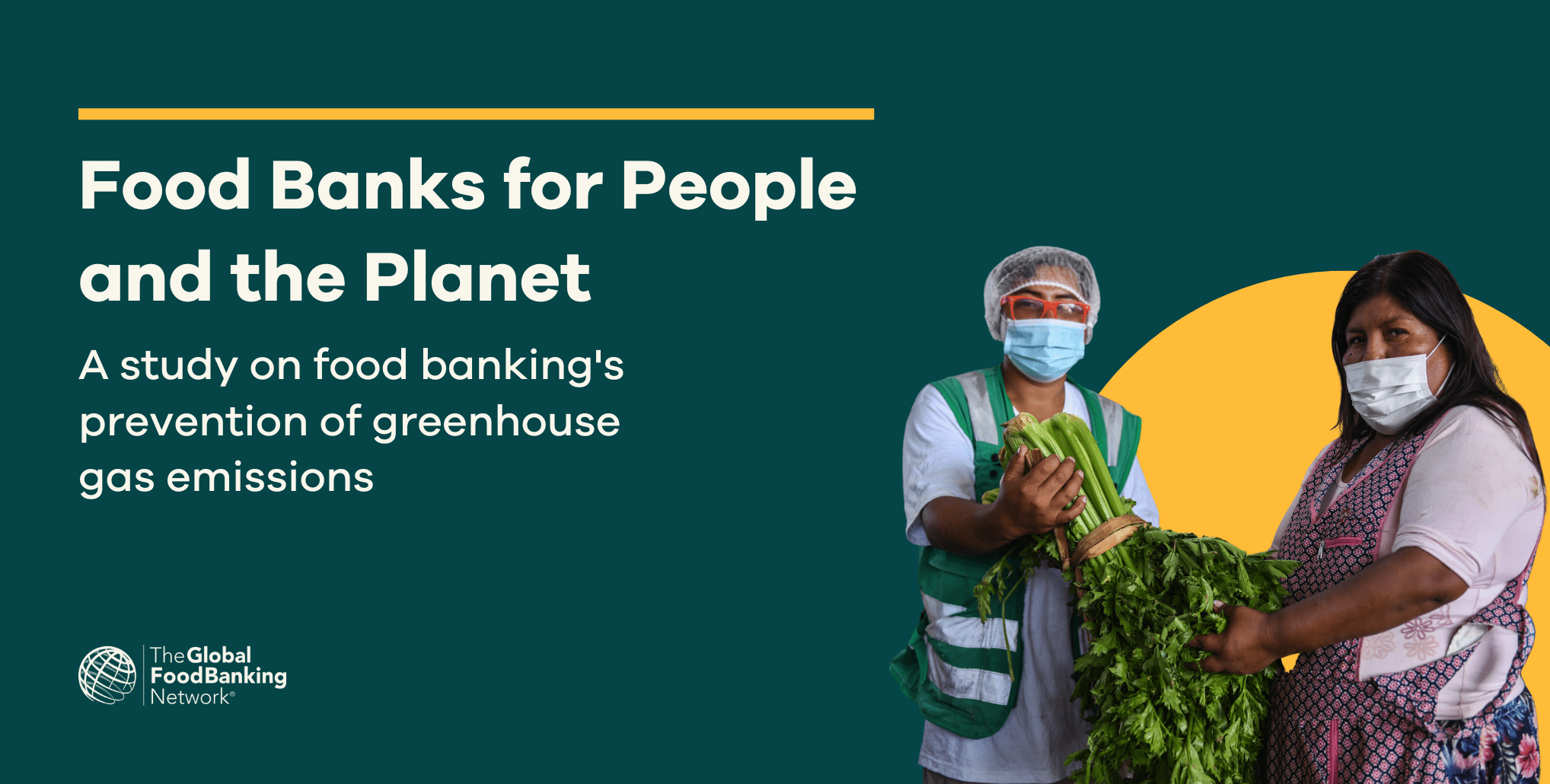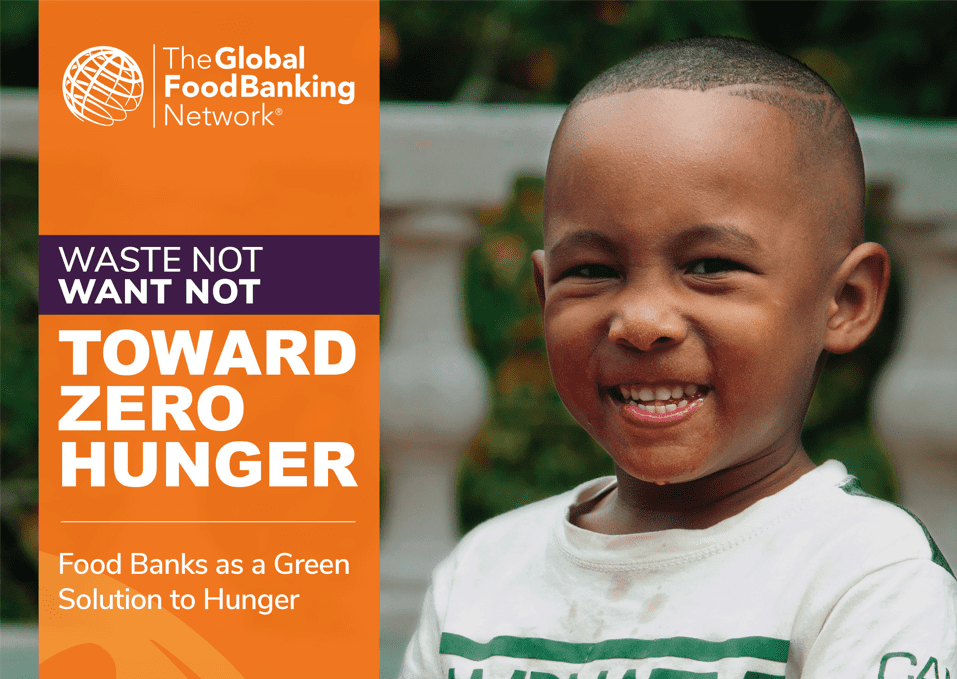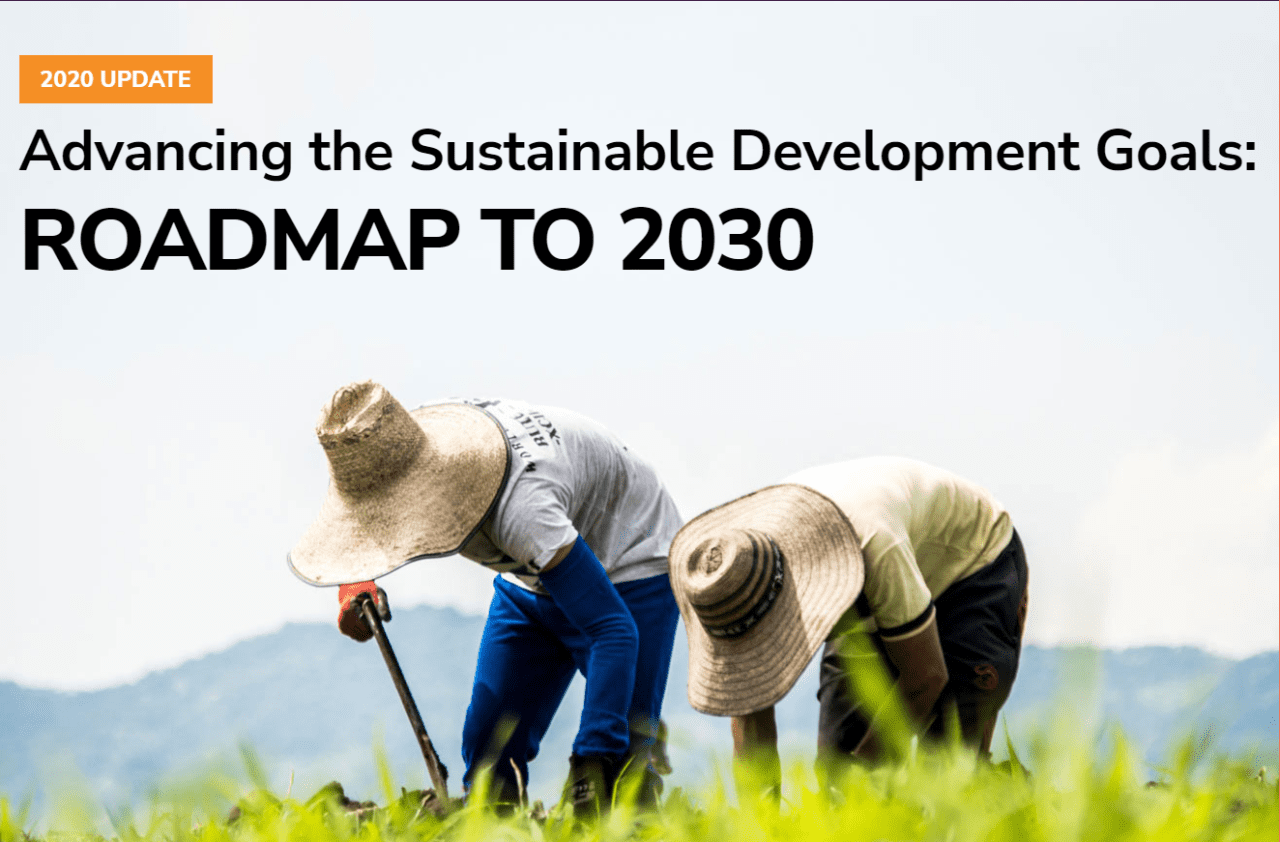
Food banks are crucial to global efforts to alleviate hunger and prevent food loss and waste. In 2019, The Global FoodBanking Network (GFN) released the first study to quantify the collective worldwide impact of more than 1,000 food banks in nearly 60 countries, including those in the GFN, European Food Banks Federation (FEBA), and Feeding America networks. The study, Waste Not Want Not: Food Banks as a Green Solution to Hunger, showed how food banks impact the communities they serve, providing a green solution to hunger and food insecurity while reducing unnecessary food loss.
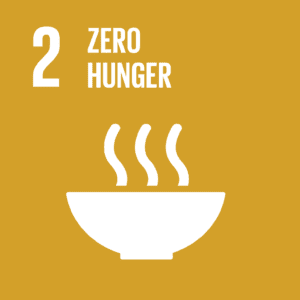
The updated study, Advancing the Sustainable Development Goals: Roadmap to 2030, provides data from 2019 documenting progress toward the Sustainable Development Goals (SDGs) of Zero Hunger (SDG 2) and reduced food waste (SDG Target 12.3). The study shows that the global impact of food banks continues to grow. It includes data from 14 new food banking organizations in 10 countries in emerging and developing economies, bringing the total number of countries covered in this study to 70. In 2019, GFN members across 44 nations and six continents expanded their services to ultimately reach 16.9 million people, an increase of 76 percent over 2018.
Overall, from 2018 to 2019 food banks served an additional 4 million people worldwide, redirected an additional 1.07 million metric tons of food from landfills to the hungry, and prevented an estimated 1.85 billion more kilograms of greenhouse gases from entering the atmosphere. Given increased economic and food system instability related to COVID-19, the expansion of the food bank model, especially in underserved communities lacking adequate social protections or food access, is crucial to future resilience and stronger communities.
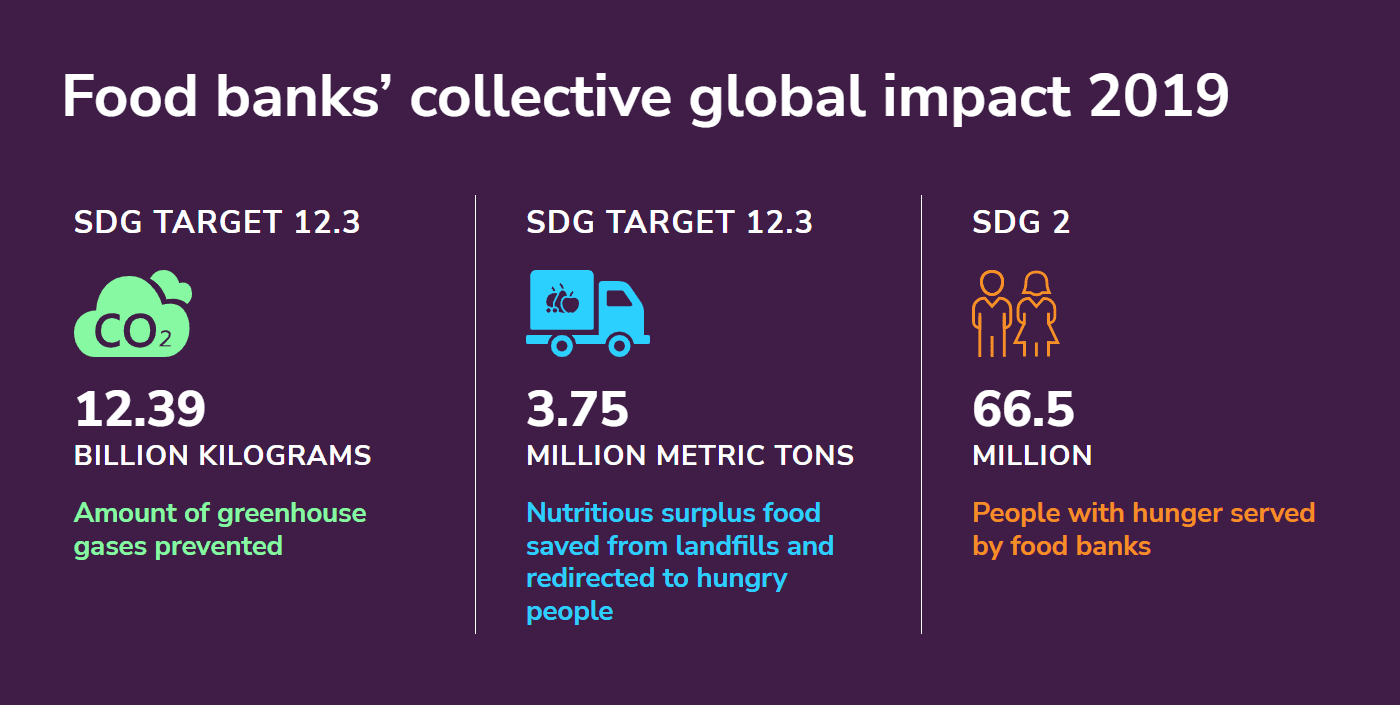
The findings offer a way forward and illustrate the importance of food banks in helping vulnerable communities and strengthening food systems in the wake of profound worldwide disruption caused by the COVID-19 pandemic. As community-based nonprofit organizations working through networks of local charities and grassroots organizations, food banks represent a “triple-win” in the communities where they operate: (1) reducing food wastage and protecting the environment, (2) providing food assistance to hungry and vulnerable people, and (3) strengthening civil society through support of local humanitarian charities.

Prior to the COVID-19 pandemic, nearly 690 million people were hungry, up by 10 million people in one year and by nearly 60 million in five years.1 An estimated 2 billion people suffered from food insecurity—the lack of regular access to healthy or sufficient food—in communities across the globe. The prevalence of moderate and severe levels of food insecurity, pre-COVID-19, was estimated to be 25.9 percent worldwide, with virtually no country unaffected. Regional estimates of moderate to severe food insecurity include more than 1 billion people in Asia, 675 million in Africa, 205 million in Latin America and the Caribbean, 88 million in Northern America and Europe, and 5.9 million in Oceania.2
Meanwhile, 1.6 billion tons of food are being lost and wasted, and the trendline is going up. Modeling conducted by Boston Consulting Group using data from the Food and Agriculture Organization (FAO) of the United Nations projects that the volume of food loss and waste will rise 1.9 percent annually from 2015 to 2030.3 The modeling was conducted pre-COVID-19 and could not account for the substantial food supply chain disruptions that have occurred, leading to significant food loss and waste as commercial markets faltered.
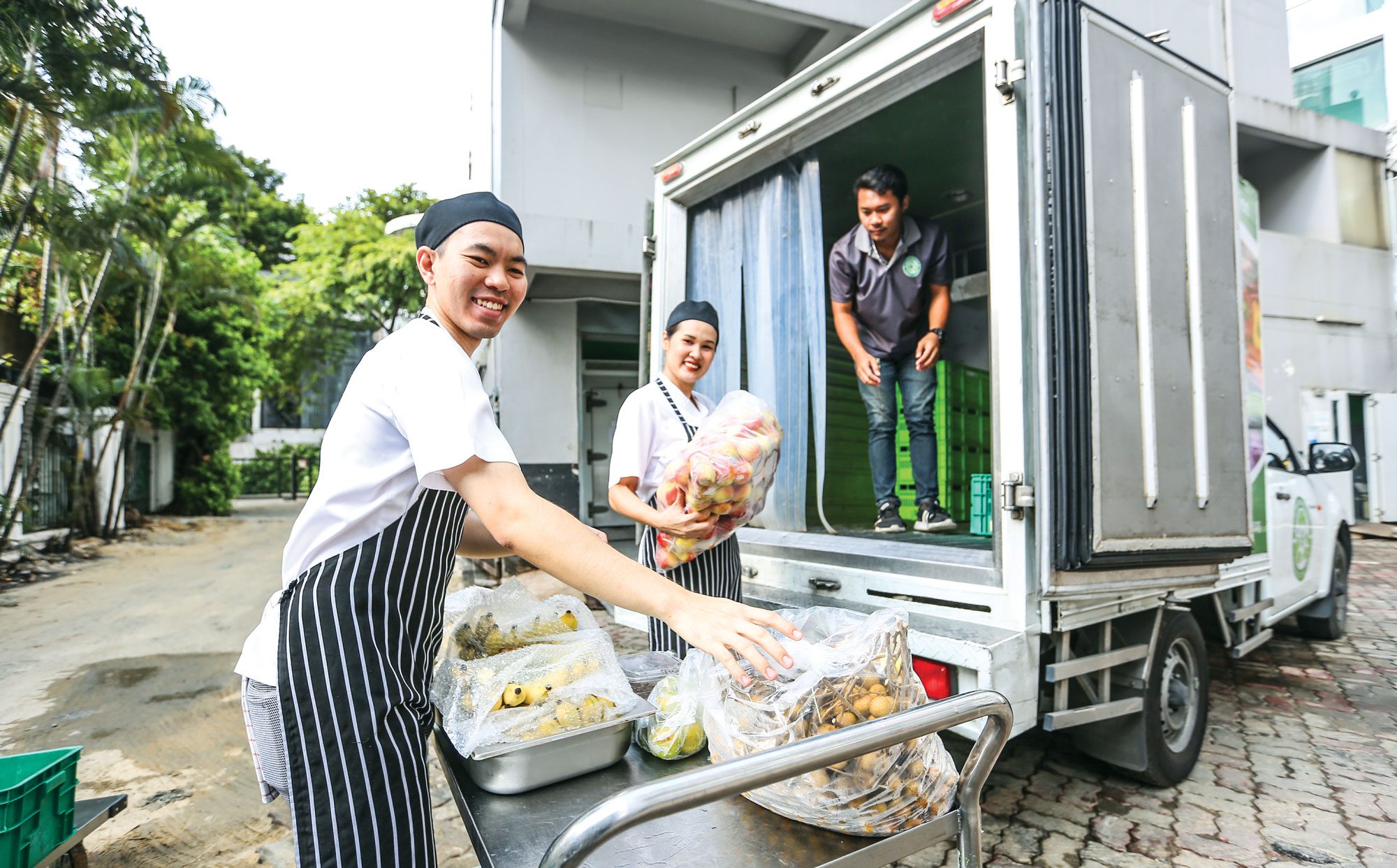
Before the pandemic, the state of global food insecurity and hunger was a humanitarian crisis. FAO has observed: “The world is not on track to achieve Zero Hunger by 2030. If recent trends continue, the number of people affected by hunger would surpass 840 million by 2030.”4
In absolute numbers, the number of people suffering from hunger has continued to rise since 2014. At the same time, the amount of food wasted was enough to feed more than a billion hungry people. Food loss and waste is a preventable environmental crisis and contributor to climate change. Precious land, water, energy, and labor resources used to produce food are lost to food wastage. Food loss/waste (FLW) amounts to roughly $990 billion worldwide and produces the equivalent of 3.3 billion tons of greenhouse gases, exacerbating climate change.5 Climate variability, extremes, and shocks brought by climate change are, in turn, key drivers of the recent rise in global hunger.6
The novel coronavirus (COVID-19) pandemic has produced a public health, economic, and humanitarian crisis unprecedented in modern times. The pandemic has impacted lives and livelihoods worldwide, destabilizing economies and food systems, with devastating effect on the most vulnerable populations. In 2020 global growth is projected to decline 4.9 percent.7 An additional 140 million people could be driven into extreme poverty,8 and an additional 83 to 132 million people could go hungry.9 FAO has warned of a looming food crisis accompanying the pandemic and called on governments to implement policies to mitigate food system failures and food access concerns.10 Because the poorest among us suffer disproportionately, many of those newly pushed into extreme poverty will be in countries with already high rates of poverty: nearly half will be in South Asia and more than a third in Sub-Saharan Africa.11
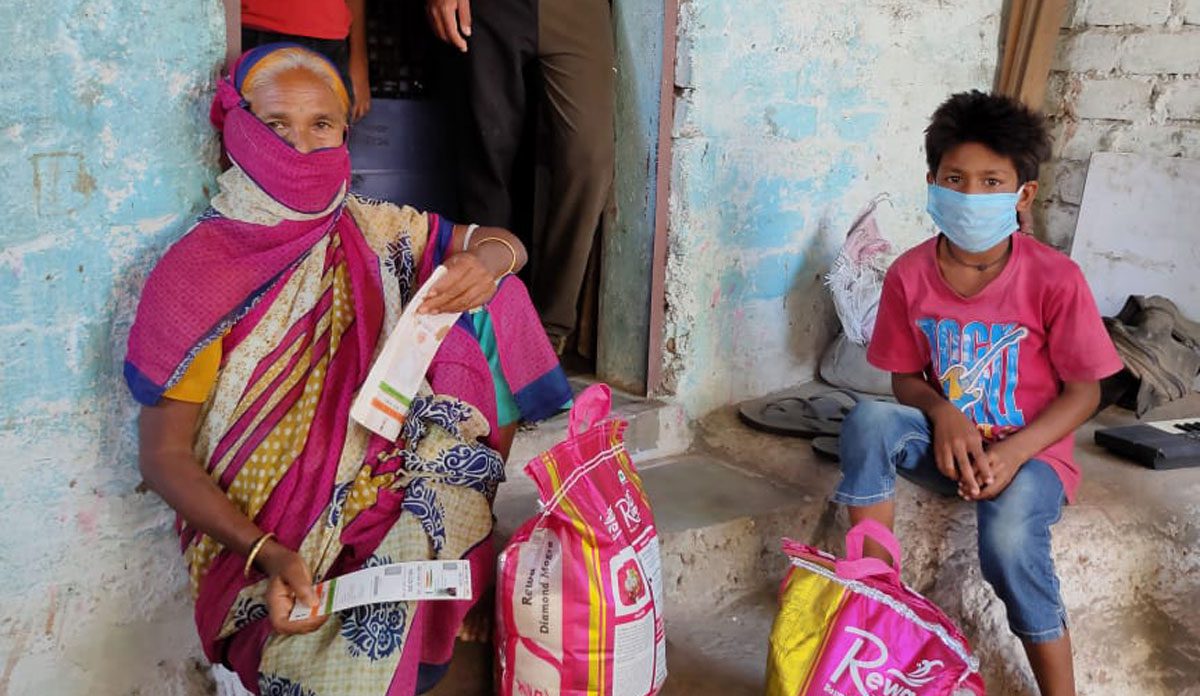
Communities across the world—in advanced economies and emerging and developing market countries alike—have been hit with back-to-back food system shocks. Disruption has led to food waste and lack of food access as millions of people lose incomes and increasingly need help. COVID-19-related disturbances to the global food supply chain have a profound local effect.
Although global food prices are largely stable, country-level disruptions in production and loss of incomes threaten food security.12 The impact can be seen in the local restaurant or school that closes, the local grocery store or market with empty shelves and stalls, and the local farmer who loses a market to sell to or lacks laborers to harvest a field.
Government policies designed to contain spread of the virus, like shelter-in-place orders and the restriction of mass gatherings, ultimately impact every level of the supply chain from farm labor to transportation to food service.13 As a result, food wastage is growing in advanced economies and emerging markets alike.14 Changes in individual and institutional food service and the hospitality industry mean that restaurants, schools, and travel and tourism businesses no longer need the quantities of food they did pre-COVID-19.15
In the United States, for example, estimates from the dairy industry suggest farmers may have dumped as much as 14 million liters of milk a day during the early stages of the COVID-19 emergency.16 Farmers and livestock producers witnessed severe market disruptions in China, Ethiopia, Nigeria, and many other parts of the world.17 A survey of farmers across nine states in India found that among those who had harvested some produce this season, 29 percent held stocks for future sale, 13 percent sold the harvests at substantially diminished prices, and about 7 percent let the produce go to waste or left it unharvested.18 Across the globe, export markets have closed and transportation delays have resulted in unshippable agricultural and fishery products remaining stalled in ports.19
Likewise, panic buying and hoarding may result in grocers and individuals having less product available to donate to food banks. But some of those excess stockpiles may also never be consumed, resulting in further waste.20 US-based ReFED conducted a survey of 80 respondents in the food and charitable food industries and found that every level of the supply chain from farms to consumers is struggling due to COVID-19-related shocks. As a result, food banks are seeing a decline in consistent food donations.21
Since March 2020, 100 percent of food banks in The Global FoodBanking Network reported increases in demand for emergency food assistance due to COVID-19, with half reporting increases of 50 percent or more. This is an increase from a previous survey administered earlier in the pandemic, when 93 percent of respondents reported an increase in demand for emergency food assistance. On average, food banks are serving more than 107,000 additional people.22 The global pandemic has local impact, and local interventions to strengthen food systems when supply chains are disrupted and provide food access to vulnerable people is essential to preventing the COVID-19 crisis from further developing into a food insecurity crisis.
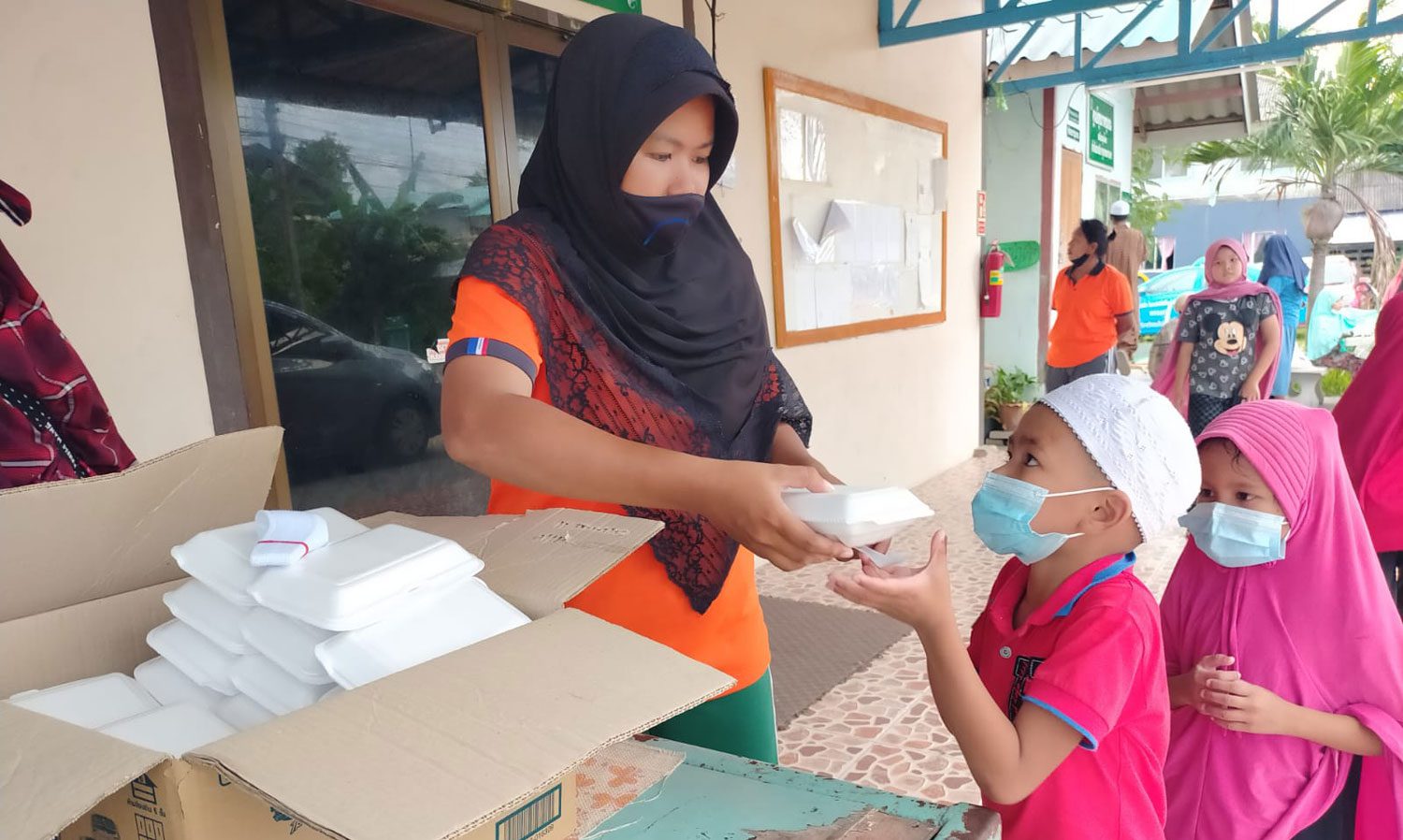
Before the global COVID-19 emergency, food banks in thousands of communities worldwide were offering a green solution to the problems of hunger and food waste at the local level. The COVID-19 pandemic has exposed the fragility of food systems and the need to rethink the food system to assure greater resilience. Unprecedented levels of food loss and waste are occurring at the same time that millions of people have an urgent need for food. This food loss and waste is often happening geographically near to those who need the food most. Mobilizing food banks to prevent food loss and waste offers a practical way to bolster food system resilience and mitigate environmental degradation, while providing essential social impact. Food banks are a critical component of stronger food systems at the community level, especially where food loss is high and social protections are weak.
The road to Zero Hunger and reductions in food loss and waste by 2030 requires not simply global commitments. It requires community-based solutions that allow the commitments to be adapted to local cultural and socioeconomic contexts to increase the likelihood for success. This study provides quantifiable evidence for the role of food banks in propelling progress toward SDG 2 and SDG Target 12.3 and building long-term resilience in food systems. The results show the impact food banks are having now and how, if scaled in their communities, they can redirect even more wholesome, surplus food away from landfills to provide better food access to vulnerable populations and strengthen food systems.
This report is made possible in part by the generous support from the following:
![]()
1. FAO et al., The State of Food Security and Nutrition in the World 2020: Transforming Food Systems for Affordable Healthy Diets (Rome: FAO, IFAD, UNICEF, WFP, and WHO, 2020),
https://doi.org/10.4060/ca9692en.
2. FAO et al., The State of Food Security and Nutrition in the World 2020.
3. Esben Hegnsholt et al., “Tackling the 1.6-Billion-Ton Food Loss and Waste Crisis,” BCG Henderson Institute, August 20, 2018, https://www.bcg.com/publications/2018/tackling-1.6-billion-ton-food-loss-and-waste-crisis.
4. FAO et al., The State of Food Security and Nutrition in the World 2020.
5. FAO, Food Wastage Footprint: Impacts on Natural Resources: Summary Report (Rome: FAO, 2013).
6. FAO et al., The State of Food Security and Nutrition in the World 2018: Building Climate Resilience for Food Security and Nutrition (Rome: FAO, IFAD, UNICEF, WFP, and WHO, 2018).
7. International Monetary Fund, World Economic Outlook Update: A Crisis Like No Other, An Uncertain Recovery (Washington, DC: International Monetary Fund, June 2020), https://www.imf.org/en/Publications/WEO/Issues/2020/06/24/WEOUpdateJune2020.
8. David Laborde, Will Martin, and Rob Vos, “Poverty and Food Insecurity Could Grow Dramatically as COVID-19 Spreads,” IFPRI Blog, International Food Policy Research Institute, April 16, 2020, https://www.ifpri.org/blog/poverty-and-food-insecurity-could-grow-dramatically-covid-19-spreads.
9. FAO et al., The State of Food Security and Nutrition in the World 2020.
10. “Act Now to Avert COVID-19 Global Food Emergency: Guterres,” U.S. News, June 9, 2020, https://news.un.org/en/story/2020/06/1065962.
11. The World Bank, Global Economic Prospects, June 2020 (Washington, DC: The World Bank, 2020), https://doi.org/10.1596/978-1-4648-1553-9.
12. Flore de Preneuf, “Food Security and COVID-19” (brief, The World Bank, Washington, DC, September 14, 2020), https://www.worldbank.org/en/topic/agriculture/brief/food-security-and-covid-19.
13. OECD, “Food Supply Chains and COVID-19: Impacts and Policy Lessons” (policy brief, OECD, Paris, June 2, 2020), http://www.oecd.org/coronavirus/policy-responses/food-supply-chains-and-covid-19-impacts-and-policy-lessons-71b57aea.
14. Robert Hamwey, “Environmental Impacts of Coronavirus Crisis, Challenges Ahead,” United Nations Conference on Trade and Development, April 20, 2020, https://unctad.org/en/pages/newsdetails.aspx?OriginalVersionID=2333.
15. Janet Fleetwood, “Social Justice, Food Loss, and the Sustainable Development Goals in the Era of COVID-19,” Sustainability 12, no. 12 (2020): 5027, https://doi.org/10.3390/su12125027.
16. Danielle Wiener-Bronner, “Why Dairy Farmers Across America Are Dumping Their Milk,” CNN Business, April 15, 2020, https://www.cnn.com/2020/04/15/business/milk-dumping-coronavirus/index.html.
17. “Blogs: COVID-19,” IFPRI Blog, Special Series, International Food Policy Research Institute, 2020, https://www.ifpri.org/landing/covid-19-blog-landing-page.
18. Sudha Narayanan, “How India’s Agrifood Supply Chain Fared During the COVID-19 Lockdown, from Farm to Fork,” IFPRI Blog, International Food Policy Research Institute, July 20, 2020, https://www.ifpri.org/blog/how-indias-agrifood-supply-chains-fared-during-covid-19-lockdown-farm-fork.
19. Maximo Torero Cullen, “Coronavirus Food Supply Chain Under Strain: What to Do?” (slideshow, FAO, Rome, March 24, 2020), http://www.fao.org/3/ca8308en/ca8308en.pdf.
20. FAO, “Mitigating Risks to Food Systems During COVID-19: Reducing Food Loss and Waste” (brief, FAO, Rome, May 11, 2020), https://doi.org/10.4060/ca9056en.
21. Melody Serafino, “ReFED’s COVID-19 Food System Review,” Overview, ReFED, n.d., https://covid.refed.com/overview.
22. The Global FoodBanking Network, “COVID-19 Pulse Survey 2” (survey, The Global FoodBanking Network, Chicago, May 2020).
To better quantify the impact food banks around the world have in ameliorating food waste and promoting a more sustainable environment, GFN has estimated the amount of greenhouse gases (expressed in CO2e) mitigated through the redirection of healthy surplus food from landfills to vulnerable people. The estimate is a global total of agricultural and landfill impacts, which includes not only GFN’s member food banks, but regional partners Feeding America, which represents 200 member food banks in the United States,1 and international partner European Food Banks Federation (FEBA), which represents 430 food banks in 24 Full Member countries and an additional five Associate Members in other countries.2
The estimation of greenhouse gas mitigation from food recycling by food banks includes informed assumptions, developed with sound methodology using validated internal survey data as well as authoritative external research. The estimates are meant to be conservative to avoid overstating any benefits.
We began by taking total kilograms distributed, data gathered for GFN through our annual Network Survey, which provides overall information about the operations and impact of member food banks. In order to ameliorate any unexpected, severe changes in distribution levels (likely due to circumstances not associated with regular growth or decreased market share, but circumstances like a natural disaster or food bank closure), we are using three-year averages of distribution totals from 2017 to 2019 (or the data available). Feeding America provided brand new FY2020 product distribution data by category and FEBA provided 2019 food data by category (we deduplicated Bulgaria and the United Kingdom as they are represented in both GFN and FEBA’s networks).
We have eliminated nonfood items (e.g., valuable grocery products like cleaning and personal hygiene products) and purchased food, items that likely wouldn’t have ended up in a landfill. Our 2015 Network Survey gathered detailed information about product categories distributed, which we aligned with the global standard of food categories set by FAO in its groundbreaking 2011 and 2013 food waste studies: cereals; starchy roots; oilcrops and pulses; fruits and vegetables; meat; dairy and eggs.3 We assumed that 100 percent of foods categorized by FAO is diverted from landfills (when information is available), but the categories do not always represent 100 percent of a food bank’s distribution or inventory. In cases in which items were not represented by FAO, including nondairy beverages, candy/sweets, spices/seasoning, sauces/condiments, and nutritional supplements (e.g., meal replacement shakes), we did not include their environmental impact in our final estimations. Therefore, the results are conservative estimates of impact.
Several GFN food banks have additional product category information beyond what was shared in the Network Survey. For Colombia and the Dominican Republic, we had access to more detailed information provided by the food bank. For Canada we used in-country waste data.4 For South Africa we used the distribution categories as defined in the Green House study.5 In some cases, we had no available product category data, so we instead created a proxy using FAO data of the global average of wasted foods by category.6
Once we developed kilogram totals by category, we entered cumulative data organized by FAO-recognized region into the publicly available World Resource Institute’s (WRI) Food Waste Value Calculator. The WRI is an invaluable tool that provided an assessment of both agricultural impacts and landfill impacts from food potentially wasted.
Calculations not undertaken in this study, but no less important, include the nutrients lost; the transportation to the landfill; the landfill construction; dumping fees saved; the land use during production; water used to irrigate crops; labor; and the many facets of wasted production time, product, and labor, including packaging, labeling, transportation, inspection, quality control, and storage. These represent great losses at all stages of the supply chain.

